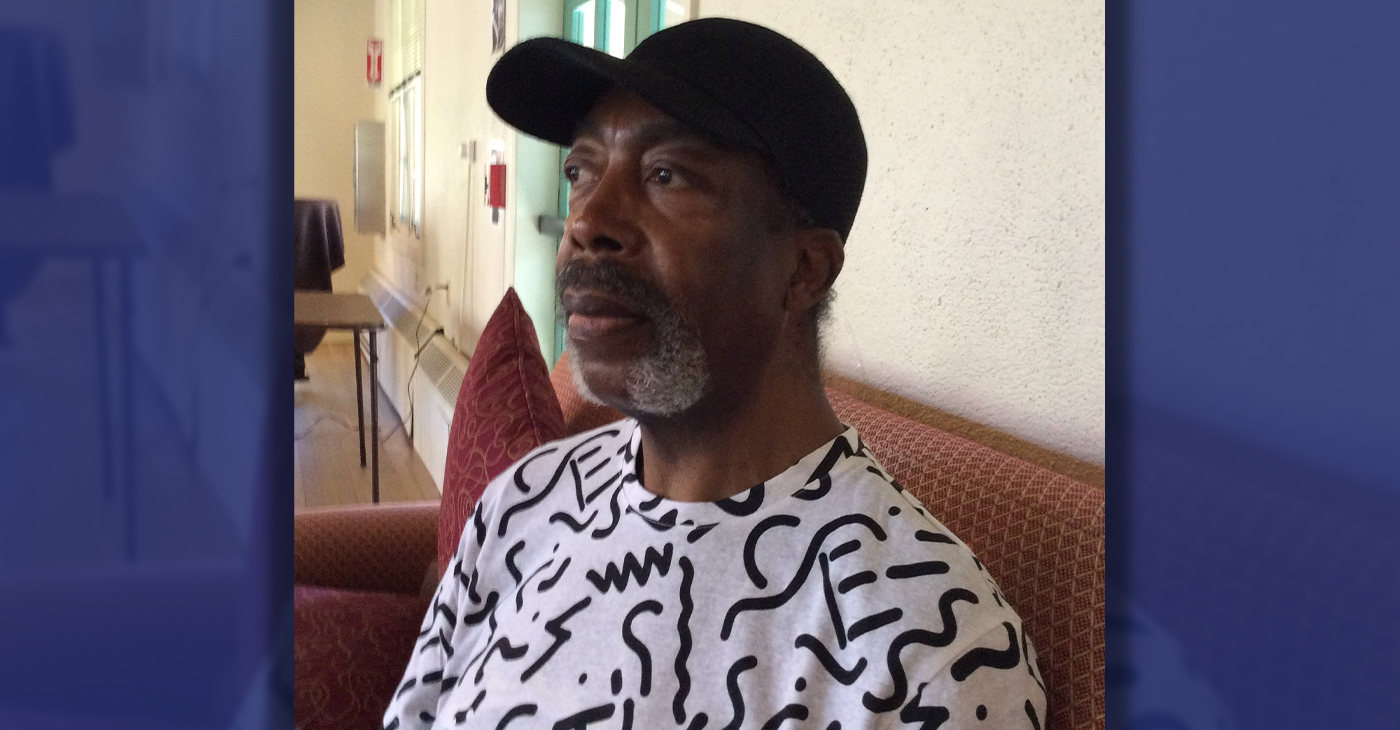Business
Blacks ‘Segregated’ in Low-Paying Retail Jobs
By Jazelle Hunt
Washington Correspondent
WASHINGTON (NNPA) – More than 1.9 million Black Americans work in retail, accounting for 11 percent of the industry’s total workforce. Despite being the second-largest source of employment for Black workers, new data from the NAACP and equality advocacy organization, Demos, finds that the industry is rife with racial inequality and poor earning potential.
According to the report, titled “The Retail Race Divide,” full-time Black and Latino salespersons earn 75 percent of the wages of their White counterparts. For Black and Latino cashiers, the figure is 90 percent. Further, Black and Latino workers are sometimes stuck in “occupational segregation;” not only are they overrepresented in low-wage industries such as retail, but they’re also overrepresented in the lowest paying positions within these industries. Consider: Black people make up 11 percent of the retail force, but 6 percent of those in managerial or leadership roles.
“They are, in effect, segregated by color and income. Now, not segregated as a matter of law, as was the case many years ago…but certainly by circumstance, by industry practice. Even where we don’t have overt discrimination that violates Title VII [of the Civil Rights Act], there are subtle forms of discrimination that may also violate Title VII, but are less obvious,” says Cornell William Brooks, president and CEO of the NAACP.
“It’s not necessarily that a company has a policy that says African Americans and Latinos should be overrepresented at the cash register and in lower paid positions. But rather, if they do not have policies to ensure that African Americans and Latinos have access to and are encouraged to apply for better paying positions as managers, there’s something profoundly wrong.”
Brittany O’Neal has worked in retail for three years, most currently in the Fashion Centre at Pentagon City in Arlington, Virginia. The 25-year-old full-time student is a few credits shy of earning a criminal justice degree, but also works full-time hours as a salesperson to support her 3-year-old son.
“The store I work at…comes with a lot of customer service. Sometimes you work really hard and [customers] end up just returning everything,” she says. “[Our pay] is all commission, unless you don’t make enough. Then you get your hourly wage.”
O’Neal says support from her family and managers in accommodating her schedule make it easier to earn enough money and still finish school. Not everyone is so fortunate; according to the report, retail wage disparities also happen through inadequate and unreliable scheduling practices. While Black, White, Latino, and Asian people work part-time at even rates, nearly half of all Black and Latino retail workers would prefer full-time hours (compared to 29 percent of Whites and Latinos). The report’s measure doesn’t include workers who want more hours while remaining part-time, which would likely play out along racial lines as well.
There’s also the difficulty in being “on-call,” a common practice among retail managers.
“Although just-in-time scheduling can have negative effects for any retail worker, there is reason to believe that the burden is disproportionately heavy on Black and Latino workers,” the report states, adding that this is the population most likely to juggle their educations, parenting, and additional employment while holding a retail job.
“Moreover, due to residential segregation and other socioeconomic constraints, Black workers have longer commute times than White workers, leading to greater time and money costs when their shifts are cut short.”
The disparities spell serious repercussions for Black Americans, and particularly Black families. Fully 17 percent of Black retail workers live below the poverty line, compared to 9 percent of retail workers overall. More than half of Black workers are responsible for at least half their household’s income, and they are the most likely of all retail workers to be the sole breadwinner in their households – 26 percent are, compared to 15 percent of White workers, and 18 percent of retail workers overall. Black retail workers are also significantly more likely to be raising children on these wages – 65 percent are, compared to the overall 33 percent.
And, according to recent analysis from the National Low Income Housing Coalition –an affordable housing research and advocacy organization – there’s nowhere in the country where a full-time minimum wage worker can afford a one-bedroom apartment (priced at the Department of Housing and Urban Development’s standard of Fair Market Rent), without paying more than 30 percent of their income.
“There’s this notion that people working in the retail industry are young, inexperienced, and lack dependents. But here’s the blue-collar reality: 90 percent of African American and Latino retail workers are over 20 years of age, and half of them provide at least 50 percent of the income their families need to survive,” Brooks says. “We’re not talking about adolescents at the cash register working part time or working to add a little something to their young budgets. We’re talking about people who have families to support.”
The effects of these disparities extend beyond retail workers’ households.
As the report explains, “Service industry employment became more central to the well-being of American workers, but the low wages and uncertain schedules that characterize that employment undermined household financial security and, by extension, growth and stability for the economy overall.”
In short, low household income translates to low consumerism, poor wealth generation, poor entrepreneurship, and slower growth in the overall economy.
The NAACP/Demos report suggests that the problems can be alleviated if retailers raise the wages for their least paid positions, as well as through state and federal policies. It also points out that legal battles and union actions have been useful tools in securing better outcomes for retail workers.
Brooks encourages people to challenge the status quo through interpersonal, legal, and civic avenues.
He says, “One of the best allies in the fight for a living wage is the NAACP. So I’d encourage people to join local branches of the NAACP, help us organize for living wages, and help us make it clear to the country that you should not have to work hard to be poor.”
Bay Area
Mayor Breed Proposes Waiving City Fees for Night Markets, Block Parties, Farmers’ Markets, Other Outdoor Community Events
Mayor London N. Breed introduced legislation on April 26 to encourage and expand outdoor community events. The first will waive City fees for certain events, making them less costly to produce. The second will simplify the health permitting for special event food vendors through the creation of an annual permit. Both pieces of legislation are part of the Mayor’s broader initiative to bring vibrancy and entertainment to San Francisco’s public right of ways and spaces.

Mayor’s Press Office
Mayor London N. Breed introduced legislation on April 26 to encourage and expand outdoor community events.
The first will waive City fees for certain events, making them less costly to produce. The second will simplify the health permitting for special event food vendors through the creation of an annual permit. Both pieces of legislation are part of the Mayor’s broader initiative to bring vibrancy and entertainment to San Francisco’s public right of ways and spaces.
Outdoor community events are integral to San Francisco’s vibrant culture and sense of community. These events include night markets, neighborhood block parties and farmers markets, and bolster the City’s economy by supporting local businesses and attracting tourists eager to experience San Francisco’s unique charm and food scene.
They offer residents, workers and visitors, opportunities to engage with local artists, musicians, and food vendors while enjoying the San Francisco’s stunning outdoor spaces and commercial corridors.
The legislation will allow for more and new community gatherings and for local food vendors to benefit from the City’s revitalization.
“San Francisco is alive when our streets are filled with festivals, markets, and community events,” said Breed. “As a city we can cut fees and streamline rules so our communities can bring joy and excitement into our streets and help revitalize San Francisco.”
Fee Waiver Legislation
The events that can take advantage of the new fee waivers are those that are free and open to the public, occupy three or fewer city blocks, take place between 8 a.m. and 10 p.m., and have the appropriate permitting from the ISCOTT and the Entertainment Commission.
The applicant must be a San Francisco based non-profit, small business, Community Benefit District, Business Improvement District, or a neighborhood or merchant association. Fees eligible for waiver include any application, permit, and inspection/staffing fees from San Francisco Municipal Transportation Agency, Department of Public Health, Fire Department, Entertainment Commission, and Police Department.
Currently, it can cost roughly anywhere between $500-$10,000 to obtain permits for organized events or fairs, depending on its size and scope. Organizations and businesses are limited to a maximum of 12 events in one calendar year for which they can receive these fee waivers.
Food Vendor Streamlining Legislation
The second piece of legislation introduced will help special event food vendors easily participate in multiple events throughout the year with a new, cost-effective annual food permit. Food vendors who participate in multiple events at multiple locations throughout the year will no longer need to obtain a separate permit for each event. Instead, special event food vendors will be able to apply and pay for a single annual permit all at once.
“Many successful food businesses either begin as pop-up vendors or participate in special events to grow their business,” says Katy Tang, Director of the Office of Small Business. “Giving them the option for an annual special event food permit saves them time and money.”
Currently, food vendors are required to get a Temporary Food Facility (TFF) permit from the Department of Public Health (DPH) in order to participate in a special event, among permits from other departments.
Currently, each special event requires a new permit from DPH ranging from $124-$244, depending on the type of food being prepared and sold. Last year, DPH issued over 1,500 individual TFF permits. With the new annual permit, food vendors selling at more than four to six events each year will benefit from hundreds of dollars in savings and time saved from fewer bureaucratic processes.
“This legislation is a step in the right direction to make it easier for food vendors like me to participate in citywide events,” said Dontaye Ball, owner of Gumbo Social. “It saves on time, money and makes it more effective. It also creates a level of equity.”
Bay Area
Faces Around the Bay: Sidney Carey
Sidney Carey was born in Dallas, Texas. He moved with his family to West Oakland as a baby. His sister is deceased; one brother lives in Oakland. Carey was the Choir Director at Trinity Missionary Baptist Church for 18 years.

By Barbara Fluhrer
Sidney Carey was born in Dallas, Texas. He moved with his family to West Oakland as a baby. His sister is deceased; one brother lives in Oakland.
Carey was the Choir Director at Trinity Missionary Baptist Church for 18 years.
He graduated from McClymonds High with a scholarship in cosmetology and was the first African American to complete a nine-month course at the first Black Beauty School in Oakland: Charm Beauty College.
He earned his License, and then attended U.C., earning a secondary teaching credential. With his Instructors License, he went on to teach at Laney College, San Mateo College, Skyline and Universal Beauty College in Pinole, among others.
Carey was the first African American hair stylist at Joseph and I. Magnin department store in Oakland and in San Francisco, where he managed the hair stylist department, Shear Heaven.
In 2009, he quit teaching and was diagnosed with Congestive Heart Failure. He was 60 and “too old for a heart transplant”. His doctors at California Pacific Medical Center (CPMC) went to court and fought successfully for his right to receive a transplant. One day, he received a call from CPMC, “Be here in one hour.” He underwent a transplant with a heart from a 25-year- old man in Vienna, Austria
Two years later, Carey resumed teaching at Laney College, finally retiring in 2012.
Now, he’s slowed down and comfortable in a Senior Residence in Berkeley, but still manages to fit his 6/4” frame in his 2002 Toyota and drive to family gatherings in Oakland and San Leandro and an occasional Four Seasons Arts concert.
He does his own shopping and cooking and uses Para Transit to keep constant doctor appointments while keeping up with anti-rejection meds. He often travels with doctors as a model of a successful heart-transplant plant recipient: 14 years.
Carey says, “I’m blessed” and, to the youth, “Don’t give up on your dreams!”
Business
Maximizing Your Bank Branch Experience
In a world of online tools that let you make banking transactions with the touch of a button, the idea of visiting a branch might seem unnecessary. However, if you haven’t visited your local branch recently, you might be surprised by what it has to offer. Your branch is much more than a place to deposit and withdraw money – it can offer the opportunity to build valuable relationships with people who can help you achieve financial independence.

Sponsored by JPMorgan Chase & Co.
In a world of online tools that let you make banking transactions with the touch of a button, the idea of visiting a branch might seem unnecessary.
However, if you haven’t visited your local branch recently, you might be surprised by what it has to offer. Your branch is much more than a place to deposit and withdraw money – it can offer the opportunity to build valuable relationships with people who can help you achieve financial independence.
Diedra Porché, Head of Community and Business Development at Chase, talks about how the bank model has evolved to maximize the branch experience for customers; how connecting with your local branch team can help you think differently about money and investing for your future.
How can a customer feel connected to a bank branch?
I love that question because we ask ourselves the same thing every day. Being part of the community means meeting with local leaders to find out what they need from us and then designing our branches around that. For example, at some of our community branches we have what we call a living room where we can host financial workshops, small business pop-up shops or nonprofit organization meetings. We also hire locally. You feel much more connected talking about financial aspirations with people from your community who went to the same high school, place of worship or maybe frequented the same recreation center down the street when they grew up.
How can I build a relationship with my bank?
Customers should feel comfortable sharing their goals, needs and wants with their banker. Also, it helps to remember the Community Manager is there to help solve your finance challenges and build a roadmap for success. You might have a short-term or long-term goal to open a business, build your credit, become debt-free, buy a home, or save for retirement, and our community team can help. At Chase, we strive to make dreams possible for everyone, everywhere, every day. Your financial future starts with building those relationships.
How can customers change negative perceptions they have about managing their money?
Far too often, customers are intimidated when they visit a bank. Our goal is to demystify banking and money myths empowering people to make the right decisions. For example, a big myth is assuming you need a lot of money to have a bank account. You don’t! Another myth is you need to carry a balance on your credit card to build credit — actively using your credit card can demonstrate that you can use credit responsibly but carrying a balance won’t necessarily improve your credit score. Finally, understanding mobile and online banking safety is key. There are so many safeguards and protections in place to guard your personal information and funds.
What’s an easy step one can take to shift their financial behavior right now?
Cultivating self-awareness is a good first step. Start by taking inventory of your spending. Be honest with yourself about what you need and what you want. Too often, people confuse the two, which leads to bad decisions. Rent is something you need to pay. An extra pair of shoes is something you may want but before you buy them ask yourself if that’s the best use of your hard-earned money. Too often, our beliefs and our fears shape our financial realities. If any of those beliefs are limiting your financial behavior, it’s important to question and examine them, and then decide you’re open to learning something different.
What’s one perception about banking that you’d like to change?
I think folks are surprised there are so many resources available and accessible both at our branches and online, it’s always a good idea to visit a nearby branch and speak to a Community Manager or banker. Outside of what we offer in-branch, our teams also work with local neighborhood partners who provide a variety of services to support the community, businesses and residents. I received a unique piece of feedback from an employee who started with the bank and had lived in the same community his whole life. When he visited his local community branch, he said, “Diedra, when I walked in, I felt dignified.” Every time I recount that story, it warms my heart because that’s what we want — we want our centers to belong to the community.
-

 Community3 weeks ago
Community3 weeks agoFinancial Assistance Bill for Descendants of Enslaved Persons to Help Them Purchase, Own, or Maintain a Home
-

 Business3 weeks ago
Business3 weeks agoV.P. Kamala Harris: Americans With Criminal Records Will Soon Be Eligible for SBA Loans
-

 Activism4 weeks ago
Activism4 weeks agoOakland Post: Week of April 10 – 16, 2024
-

 Community3 weeks ago
Community3 weeks agoAG Bonta Says Oakland School Leaders Should Comply with State Laws to Avoid ‘Disparate Harm’ When Closing or Merging Schools
-

 Activism2 weeks ago
Activism2 weeks agoOakland Post: Week of April 24 – 30, 2024
-

 City Government3 days ago
City Government3 days agoCourt Throws Out Law That Allowed Californians to Build Duplexes, Triplexes and RDUs on Their Properties
-

 Community2 weeks ago
Community2 weeks agoRichmond Nonprofit Helps Ex-Felons Get Back on Their Feet
-

 Community2 weeks ago
Community2 weeks agoOakland WNBA Player to be Inducted Into Hall of Fame













































